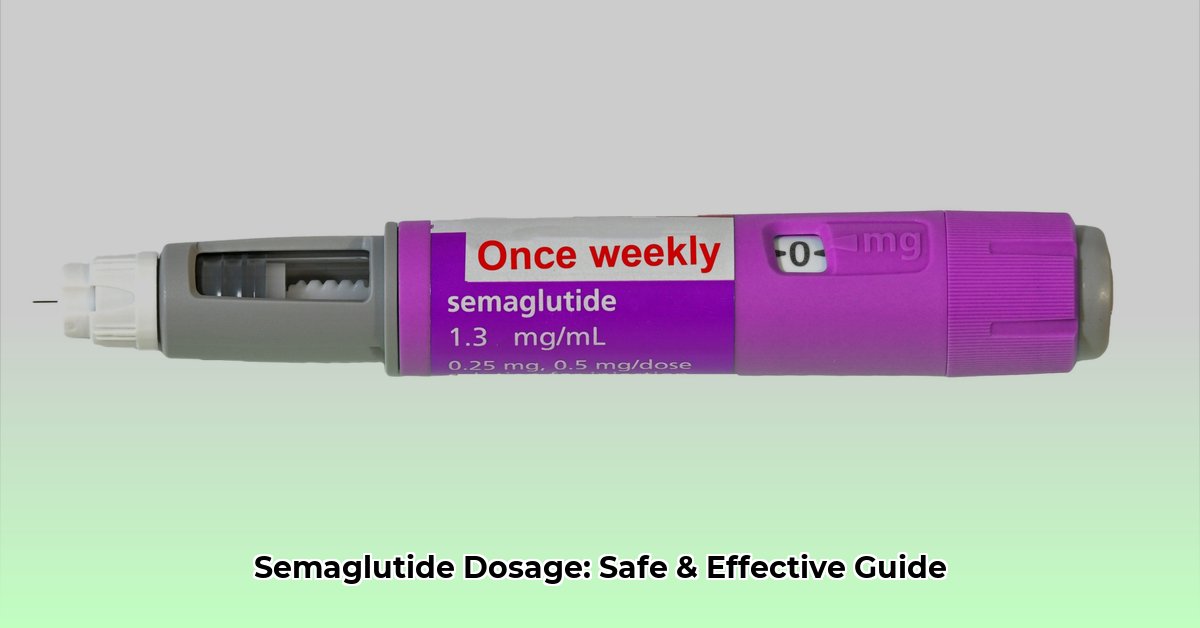Semaglutide has gained popularity for weight management and type 2 diabetes treatment. Compounded versions may offer cost savings and dosage flexibility, but it’s crucial to understand the potential risks and consult your doctor before considering this option. This guide provides essential information about compounded semaglutide, including dosage calculations, risks, and benefits, to help you make informed decisions about your health. This guide is not a substitute for professional medical advice.
Compounded vs. Commercial Semaglutide: Understanding the Differences
Considering compounded semaglutide? It’s vital to understand how it differs from FDA-approved versions like Ozempic, Wegovy, and Rybelsus. Commercial semaglutide undergoes rigorous testing for quality, potency, and purity, ensuring each dose is consistent and safe. Think of it like buying a car from a reputable dealer – you can generally trust its reliability.
Compounded semaglutide, prepared by a compounding pharmacy, offers customization options like dosage adjustments and alternative delivery methods. However, this customization comes with potential risks. Unlike commercially available semaglutide, compounded versions lack the same level of regulatory oversight, increasing the possibility of variations in strength, purity, and even contamination. It’s akin to having a car custom-built – while it might meet your specific needs, there’s a higher chance of something going wrong if the builder isn’t experienced and meticulous.
Commercial Semaglutide Dosage: A Baseline for Comparison
Before exploring compounded options, let’s review the typical dosage guidelines for commercially available semaglutide. This information serves as a useful benchmark when considering compounded alternatives. Remember, these are general guidelines, and your doctor will determine the appropriate dosage and titration schedule based on your individual needs.
- Ozempic/Wegovy (Type 2 Diabetes/Weight Management): A common starting dose is 0.25 mg weekly, often titrated up to 0.5 mg after 4 weeks, and potentially further increased for weight management up to a maximum of 2.4 mg weekly.
- Rybelsus (Type 2 Diabetes): The starting dose is typically 3 mg daily, increasing to 7 mg daily after one month, and potentially reaching a maintenance dose of 14 mg daily.
Calculating Your Compounded Semaglutide Dosage: A Step-by-Step Guide
Calculating the dosage for compounded semaglutide is crucial for safe and effective use. These calculations require careful attention, as even small errors can have significant consequences. Always double-check your work and consult with your doctor or pharmacist if you have any doubts.
Step 1: Determine the Concentration
The concentration, expressed as milligrams per milliliter (mg/mL), indicates the amount of semaglutide in each milliliter of solution. This information is essential for accurate dosing. Always verify the concentration on your prescription label.
Step 2: Calculate Your Dosage in Milligrams (mg)
Your doctor will prescribe your dosage in milligrams based on your individual health needs and treatment goals.
Step 3: Calculate the Volume
Using the concentration (mg/mL) and your prescribed dose (mg), calculate the required volume in milliliters (mL). Here’s the formula:
Volume (mL) = Dose (mg) / Concentration (mg/mL)
Example: If your prescribed dose is 0.5 mg and your concentration is 2.5 mg/mL:
Volume (mL) = 0.5 mg / 2.5 mg/mL = 0.2 mL
Step 4: Convert to Units (If Necessary)
Some syringes measure in units rather than milliliters. If necessary, convert the volume from milliliters to units using a conversion chart provided by your pharmacist or a specially marked syringe.
Step 5: Titration Schedule: Starting Low and Slow
Your doctor will likely recommend a titration schedule, starting with a low dose and gradually increasing it over time. This helps your body adjust to the medication and minimizes the risk of side effects. Always follow your doctor’s prescribed titration schedule.
Dosages for Common Concentrations (Examples Only – Consult Your Doctor):
The table below illustrates how different concentrations affect injection volumes for common doses. Do not use this chart to calculate your dose. Always follow your doctor’s instructions and confirm calculations with your pharmacist.
| Dose (mg) | Volume (mL) for 1 mg/mL | Volume (mL) for 2.5 mg/mL | Volume (mL) for 5 mg/mL |
|---|---|---|---|
| 0.25 | 0.25 | 0.1 | 0.05 |
| 0.5 | 0.5 | 0.2 | 0.1 |
| 1.0 | 1.0 | 0.4 | 0.2 |
| 1.7 | 1.7 | 0.68 | 0.34 |
| 2.4 | 2.4 | 0.96 | 0.48 |
Risks and Benefits: A Balanced Perspective
Compounded semaglutide may appear enticing due to potential cost advantages and personalized formulations. However, it carries risks that must be carefully considered.
Potential Risks of Compounded Semaglutide:
- Variations in Potency and Purity: Inconsistent compounding practices can lead to fluctuations in the actual dose received.
- Contamination: If not prepared in a sterile environment, compounded medications carry a higher risk of contamination.
- Lack of Regulation: Compounded medications aren’t subject to the same rigorous testing and quality control as FDA-approved drugs.
Potential Benefits of Compounded Semaglutide:
- Cost Savings: Compounded versions might be less expensive than commercially available options.
- Dosage Flexibility: Compounding allows for customized dosages and formulations, catering to individual needs not met by standard products.
Choosing a Reputable Compounding Pharmacy: Essential for Safety
If you decide to pursue compounded semaglutide, selecting a reputable compounding pharmacy is paramount. Look for pharmacies accredited by the Pharmacy Compounding Accreditation Board (PCAB), demonstrating adherence to strict quality and safety standards. Don’t hesitate to inquire about their quality control procedures, ingredient sourcing, and staff training. It’s also wise to seek recommendations from your physician.
Managing Side Effects
Semaglutide, compounded or commercial, can cause side effects. Common side effects include gastrointestinal issues like nausea, vomiting, diarrhea, and constipation. These can often be managed with dietary changes, over-the-counter medications, or advice from your doctor. More serious side effects are rare but possible. Always report any side effects to your doctor immediately.
Frequently Asked Questions (FAQs)
- How much does compounded semaglutide cost? The cost varies depending on the pharmacy and your dosage. It’s important to compare prices and discuss costs with your pharmacy and insurance provider.
- How is compounded semaglutide administered? Compounded semaglutide is typically administered via subcutaneous injection, similar to Ozempic and Wegovy. Your pharmacist will provide detailed instructions.
- Are there any drug interactions I should be aware of? Discuss all medications and supplements you are taking with your doctor and pharmacist to identify any potential interactions.
Disclaimer: This information is strictly for educational purposes and does not constitute medical advice. Always consult with a qualified healthcare professional before starting any new medication, including compounded semaglutide.
- Weight Loss Supplements That Work and Those That Dont - October 31, 2025
- Male Eating Disorders Often Missed but Increasingly Prevalent - October 29, 2025
- Males With Anorexia Nervosa Have Distinct Symptoms and Treatment Needs - October 28, 2025










